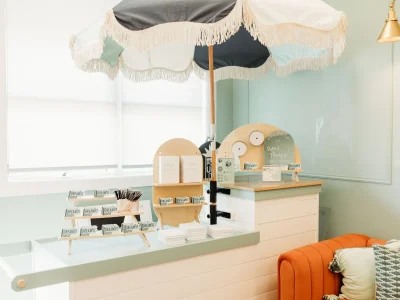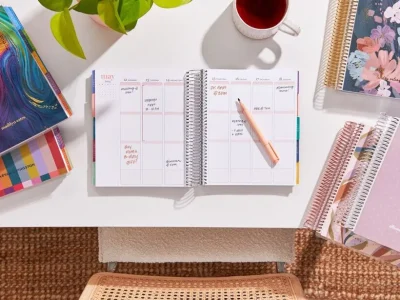Team building tips offer advice for creating tight-knit teams and squeezing out maximum performance from its members. In addition, these techniques may also help improve relationships.
Selecting an effective team building activity is crucial to its success. Steer clear of activities that don’t encourage communication; opt for events like cooking classes or escape rooms instead. Team building in locations like War Zone Hong Kong can be a tremendous opportunity but you want to know the following.
Body Language
Body language plays a pivotal role in every communication and interaction that takes place, from personal conversations to workplace interactions. Although some nonverbal cues such as crossed arms or tapping feet may be completely out of a person’s control, others can learn how to control theirs for greater effect – for instance leaning in when someone speaks to show openness, or gently touching another’s shoulder during conversations to show care and concern are some effective forms of body language used to form relationships.
A smile is a powerful communication tool, helping to foster an environment of trust between two people. A smile can express interest or affection or recall memories together; when used appropriately it can be one of the most effective tools in creating healthy relationships; however insincere smiles will soon be noticed by everyone around them. Employing these simple and effective body language hacks into daily interactions will create more trustworthy bonds among team members, and lead to enhanced working relationships overall.
Stress Balls
Stress balls are a popular branded giveaway item and an effective way to establish relationships with clients and employees alike. Available in an array of colors, these stress balls can be customized with your sports team logo, company tagline or other messages for increased brand recognition and increased brand awareness.
Squeezing the soft, squishy ball may provide a calming effect by relieving tension and stress energy build-up, and physical therapists use these toys as part of their practice to strengthen hand and finger grip strength. Furthermore, these adorable, budget-friendly toys can show your dedication to providing emotional well-being support to clients and employees alike.
As well as relieving stress, the simple act of playing with a stress ball can also help people suffering from attention deficit disorders improve focus and attention. According to one study conducted with sixth grade students who used stress balls they showed improvements in attitude, attention, writing abilities and writing styles compared with control groups who didn’t use stress balls at all. Stress balls should only be used as part of a comprehensive treatment plan and should never replace medical care when treating attention deficit disorders.
Stress balls are also an invaluable way to manage and ease anxiety among children with autism or ADHD, according to Dr. Brooks. She notes that children in these conditions often turn to fidgeting, rocking and verbal repetition to alleviate symptoms of stress – however using a stress ball as a constructive activity helps these students focus and concentrate on classroom work more easily.
Helium Stick
This interactive and challenging icebreaker is great for encouraging team collaboration and communication among group members. Participants are challenged with lowering a light stick down onto the ground within predetermined rules; sometimes known as magic stick or Let Go Of My Ego it can serve as an excellent demonstration of trust, teamwork, and let-go mentality as applied in group tasks.
Start by arranging two rows that face each other and having participants line up facing both rows, arms extended with index fingers pointing in towards each other and hands open, index fingers pointed towards one another, as you place the Helium Stick across their fingertips at approximately chest height. Make it clear to participants that their index fingers must always remain on the Helium Stick at all times; any time anyone’s index fingers leave, it will move upwards and they must start over.
The Helium Stick activity encourages team members to communicate their ideas and strategies for lowering the Helium Stick, helping everyone realize how every member is necessary to complete this task. Furthermore, trust is built among participants when they rely on each other for maintaining contact with the stick and applying equal downward pressure evenly. In turn, this helps build resilience by encouraging participants to persist when initial attempts at lowering it do not succeed – leading them towards rich discussions about overcoming obstacles to reaching common goals.
Lego Sculpture
LEGO sculptures are an impressive form of art that are both educational and entertaining. They can be created based on real objects like animals and landmarks, or completely original. To craft stunning LEGO sculptures it is essential to study real-life references while paying close attention to proportions, textures and proportions using photographs, drawings or models as reference sources; advanced building techniques like SNOT (studs not on top) and greebling can add even greater texture and complexity to the final masterpieces.
LEGO sculpture art has become an increasingly popular hobby among adults, and even some professionals like Nathan Sawaya have made careers out of it – his “Art of the Brick” exhibit tours globally around the world! Sawaya’s sculptures have been described as folk or outsider art since most people who build these creations do so without formal artistic training.
Team Building Tower Building Challenge This activity is an effective teambuilding activity to promote communication, planning and problem solving skills among teammates. Break your group into teams of two to eight members each and give each an equal amount of building material; teams should then compete to construct the tallest freestanding tower they can in 20 minutes; the winner receives bragging rights! It is a fun yet friendly way of stimulating collaboration among teammates while strengthening communication among them all.
Sticky Notes
Sticky notes are flexible and repositionable squares of adhesive paper used for note taking, brainstorming, ideation, organization and categorization tasks. They’re great for drawing attention to key items on a busy workday schedule while offering structure and clarity in any busy workplace environment.
Utilizing Gestalt principles, sticky note techniques can facilitate the visual grouping of elements into meaningful wholes. Gestalt refers to a set of perceptual principles which apply to our perception of patterns and configurations as well as individual elements within them, providing cognitive support in various fields like design and art.
One of the more imaginative uses for sticky notes is creating relationships by drawing individual parts of an image on separate pieces of paper and then reassembling it as a mosaic. This activity encourages creative thought within teams.
Sticky note interaction that contributes to design cognition is its dynamic exploration of inter-note associations through physical movement, gaze and verbalization in team settings. For instance, in this excerpt from a design session, repeatedly moving a sticky note without placing it finally on the board allows team members to collectively explore its membership with existing categories and determine its most fitting placement based on content; here, G cluster is appropriate because its content pertains to flowchart representation of solution under development.








Comments